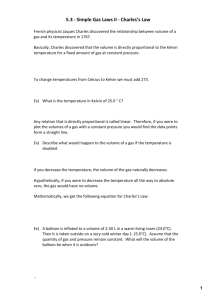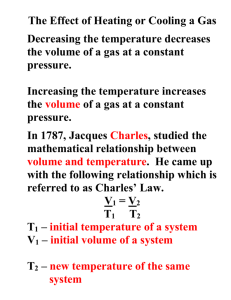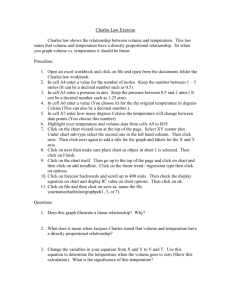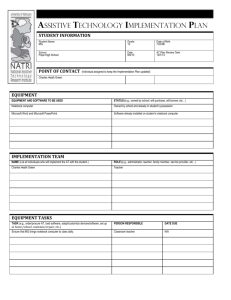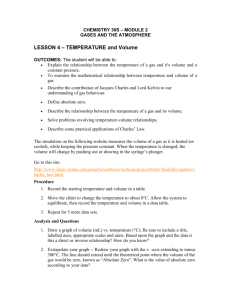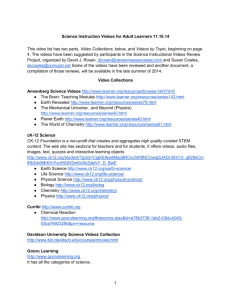Charles' Law Lab: Temperature & Volume Relationship
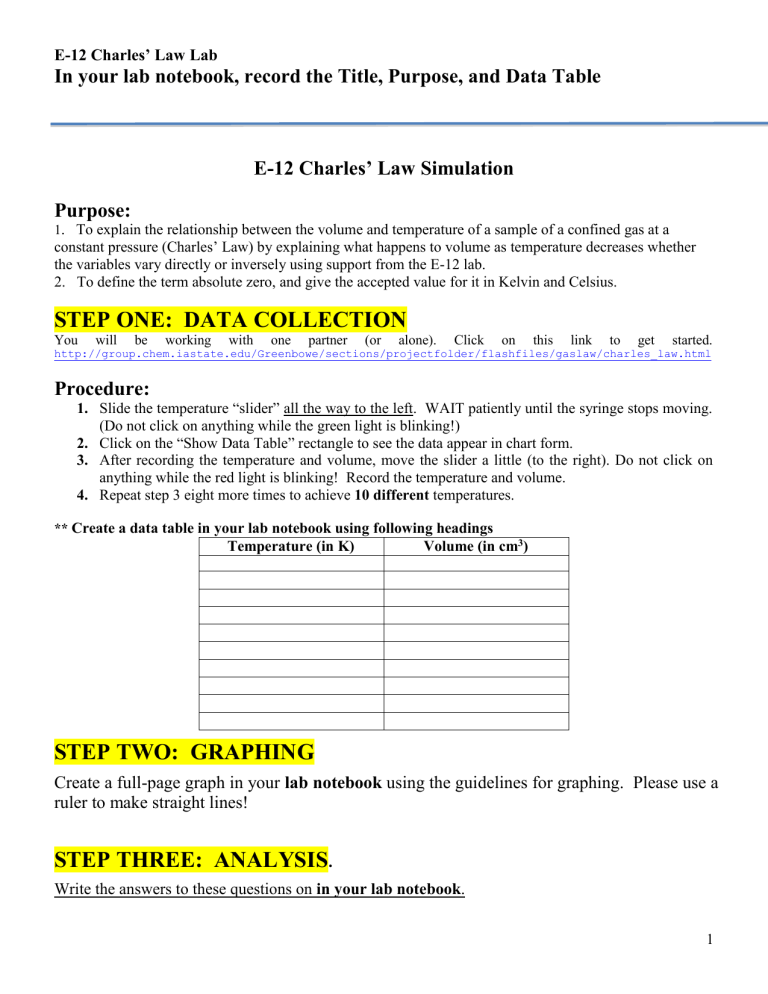
E-12 Charles’ Law Lab
In your lab notebook, record the Title, Purpose, and Data Table
E-12 Charles’ Law Simulation
Purpose:
1 . To explain the relationship between the volume and temperature of a sample of a confined gas at a constant pressure (Charles’ Law) by explaining what happens to volume as temperature decreases whether the variables vary directly or inversely using support from the E-12 lab.
2. To define the term absolute zero, and give the accepted value for it in Kelvin and Celsius.
STEP ONE: DATA COLLECTION
You will be working with one partner (or alone). Click on this link to get started. http://group.chem.iastate.edu/Greenbowe/sections/projectfolder/flashfiles/gaslaw/charles_law.html
Procedure:
1.
Slide the temperature “slider” all the way to the left. WAIT patiently until the syringe stops moving.
(Do not click on anything while the green light is blinking!)
2.
Click on the “Show Data Table” rectangle to see the data appear in chart form.
3.
After recording the temperature and volume, move the slider a little (to the right). Do not click on anything while the red light is blinking! Record the temperature and volume.
4.
Repeat step 3 eight more times to achieve 10 different temperatures.
** Create a data table in your lab notebook using following headings
Temperature (in K) Volume (in cm 3 )
STEP TWO: GRAPHING
Create a full-page graph in your lab notebook using the guidelines for graphing. Please use a ruler to make straight lines!
STEP THREE: ANALYSIS
.
Write the answers to these questions on in your lab notebook .
1
E-12 Charles’ Law Lab
1.
Charles law relates temperature and volume. When the temperature of a confined gas increases, what happens to the volume? Which type of relationship is this? (inverse or direct).
2.
What is meant by the term “Absolute Zero”? (aka: Why is it called that? Not what does it equal!)
3.
What is the accepted value for Absolute Zero in Celsius (you can use the Internet)?
4.
The point where your graph’s line crosses the x-axis is your Absolute Zero value for this experiment.
What was your value for Absolute Zero (from graph)?
5.
How do the answers to #3 & 4 compare (or contrast)?
6.
Write an equation that allows you to convert between the Celsius and Kelvin temperature scales. (you may need to use the book or Internet.)
7.
The coldest part of space is 2.7 K. * Use the formula you wrote in #7 to determine the temperature in
Celsius.*
8.
Explain one real-life example of Charles’ Law.
STEP FOUR: CONCLUSION
.
In your lab notebook, answer the purposes! Be sure to use full sentences .
2
